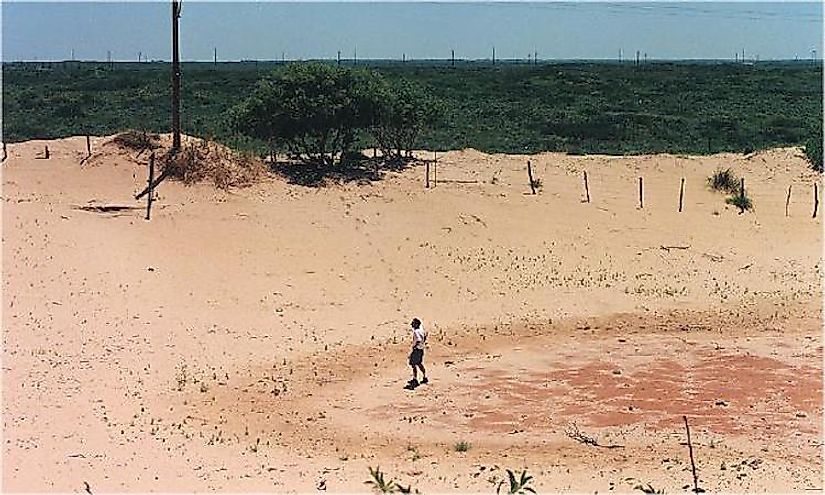Aeolian Landforms: What Is A Blowout?

What Is A Blowout?
Depression may be formed on the dune ecosystem through the removal of sediments by the wind. These sandy depressions are referred to as blowout. Blowout is a sandy depression in a dune ecosystem commonly found on arid margins and coastal settings. It can also be formed by the loss of vegetation which leaves the soil bare and easily blown away by the wind. A blowout can be few meters wide or even larger but is commonly less than 50 meters in diameter. Its depth varies from a few inches to several feet. A blowout occurs mostly near the sea shores where with the frequent strong wind but little protection to protect break or block the wind. Beaches with no vegetation cover are also exposed to strong wind which may open up the ground and remove sand from the surrounding area forming a blowout in the process.
Formation Of A Blowout
Blowouts are mostly created when the wind erode patches of bare sand on stabilized vegetative dunes. The depression usually starts from a higher part of stabilized dunes. When plant growth on sandy or loose soil is eliminated for any reason wind can blow the sand away causing a depression on the ground. Sometimes the exposed land may quickly be re-vegetated before the blowout can expand. However, if the exposed are is not quickly covered by vegetation, wind erosion may deepen the exposed area leading to a tunneling effect. The blowout, in this case, will continue to form downward until it hits a non-erodible substance. Meanwhile, the eroded material will be deposited on the downside of a blowout forming a dune which covers the vegetation leading to a larger area of depression and creating parabolic dunes. Human activities such as poor agricultural practices and poor land management contribute to the formation of a blowout by exposing loose soil to the wind.
Types Of Blowout
The morphology of a blowout depends on the speed of the wind and its direction and the topography. There are several types of blowout formed as a result of the action of the wind on the vegetation. However, scientists have grouped the blowout into two types; saucer and trough. Saucer blowout is semicircular with a saucer shape while the trough blowout is more elongated with deeper basin and steeper slopes. The structure of both types of a blowout can affect the flow of the wind within the basin and also have deflation basin eroded until it gets to the non-erodible base.
Conditions For Formation Of A Blowout
The disturbance is a term used to describe the conditions that create exposure in the vegetative cover which leads to the formation of a blowout. Disturbances have three major characteristics which determine if the depression will be formed or expanded; the penetration magnitude must be greater than the toughness of the protective vegetative cover, the transportation of sediments in an exposure should be limited if the spatial coverage of the exposure is too small, and spatial configuration of the disturbed opening will affect the fetch length and transportation of sediments in the exposure. These conditions assist in the formation of a blowout and help dictate if the Aeolian process will form a depression.
Examples Of Blowout
Some of the popular blowout locations around the world include Ravenmeols Local Nature Reserve in the UK where huge blowouts called Devil’s Holes have occurred. A blowout is also located 7 km south of Earth, Texas.











